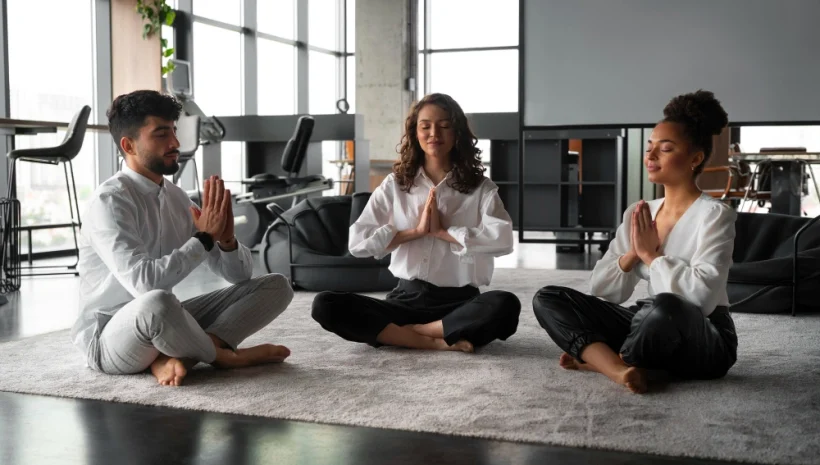
When it comes to addiction recovery and mental health, no single path fits everyone. People heal in different ways. For some, therapy and medication are enough. For others, adding yoga, nutrition, mindfulness, or acupuncture makes a big difference. That’s where the idea of combining traditional and holistic treatments comes in.
By blending science-based therapies with natural healing practices, individuals can support their whole self—mind, body, and spirit. This balanced approach often leads to more lasting recovery, reduced relapse, and improved emotional well-being.
In this article, we’ll explore what traditional and holistic treatments offer, why combining them can be effective, and how to find the best mix for your own recovery journey.
Traditional treatment refers to evidence-based medical or psychological methods used in addiction and mental health care. These include:
These treatments are backed by research and are often the first line of care for mental health and addiction issues.
According to the National Institute on Drug Abuse (NIDA), combining medication with behavioral therapy is the most effective way to treat substance use disorders 1. But even so, many people don’t fully heal until they address deeper emotional, spiritual, and physical needs—which is where holistic practices can help.
Holistic treatments focus on healing the whole person—not just the symptoms. These therapies support emotional balance, physical health, and spiritual growth. Common holistic practices include:
Holistic therapies aren’t meant to replace medical care. Instead, they enhance it by addressing areas that traditional treatment may overlook.
A 2021 study in Frontiers in Psychology found that mindfulness-based practices, when combined with therapy, led to significant reductions in anxiety, depression, and substance cravings 2.
Blending traditional and holistic approaches gives people a more complete recovery experience. Here's why it works so well:
Traditional care often focuses on stopping symptoms. Holistic methods explore why those symptoms exist. For example, therapy might help someone process trauma, while yoga helps them release trauma stored in the body.
Recovery isn’t just mental—it’s physical. Nutritional therapy restores depleted vitamins. Acupuncture calms the nervous system. These approaches complement therapy and medication by reducing stress, improving sleep, and boosting mood.
Meditation and breathwork help people manage triggers in real-time. Art or journaling provides an outlet for emotions. These tools empower individuals to handle daily stress more effectively.
When people feel heard and supported in multiple ways, they’re more likely to stay engaged in their recovery. A study in Journal of Substance Abuse Treatment showed that people receiving both traditional and holistic care had higher completion rates in treatment programs 3.
Cognitive Behavioral Therapy teaches people how to reframe negative thoughts. Adding mindfulness helps them become more aware of those thoughts as they arise, creating space to choose a new response.
Medication-assisted treatment (like Suboxone or methadone) manages physical withdrawal symptoms. Yoga and acupuncture ease anxiety and support emotional balance, making it easier to stick with treatment.
Group therapy provides connection and peer support. Creative expression allows individuals to process experiences that are hard to explain with words.
Talk therapy explores emotions and patterns. Nutrition coaching helps repair the body, support brain chemistry, and reduce mood swings—especially in early recovery.
Lena, a 34-year-old recovering from alcohol use disorder, found lasting healing through a mix of both approaches.
“I started with therapy and medication, but something was missing. I still felt anxious and disconnected. Then I added weekly yoga and started drawing again. It helped me feel calm in my body for the first time. The combination gave me structure and self-expression. That’s when things started to shift.”
Lena’s story shows that combining traditional and holistic treatments can lead to deeper, more personal healing.
Everyone’s path is different. You may benefit from a combined approach if:
Talk with your therapist or treatment team. Ask about holistic programs or providers in your area. Many treatment centers now offer integrated care—programs that combine both methods under one roof.
Healing from addiction or mental health challenges takes more than willpower. It takes support, tools, and a willingness to care for your whole self.
Combining traditional and holistic treatments offers a powerful, personalized approach to recovery. It honors your body, your emotions, and your spirit. It gives you the structure of evidence-based care and the softness of self-care and creativity.
Whether you’re just beginning or already deep in your journey, remember: you deserve a recovery plan that works for you. Balance is not about choosing sides—it’s about choosing what helps you heal.